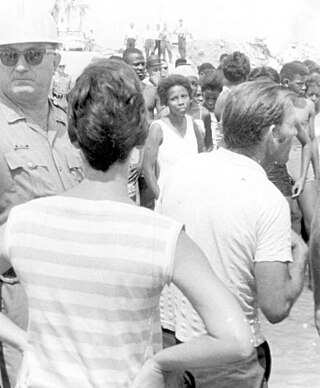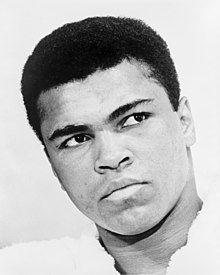
The Thirteenth Amendment to the United States Constitution abolished slavery and involuntary servitude, except as punishment for a crime. The amendment was passed by the Senate on April 8, 1864, by the House of Representatives on January 31, 1865, and ratified by the required 27 of the then 36 states on December 6, 1865, and proclaimed on December 18. It was the first of the three Reconstruction Amendments adopted following the American Civil War.

Holmes County is a county in the U.S. state of Mississippi; its western border is formed by the Yazoo River and the eastern border by the Big Black River. The western part of the county is within the Yazoo-Mississippi Delta. As of the 2020 census, the population was 17,000. Its county seat is Lexington. The county is named in honor of David Holmes, territorial governor and the first governor of the state of Mississippi and later United States Senator for Mississippi. Holmes County native, Edmond Favor Noel, was an attorney and state politician, elected as governor of Mississippi, serving from 1908 to 1912.
In American political discourse, states' rights are political powers held for the state governments rather than the federal government according to the United States Constitution, reflecting especially the enumerated powers of Congress and the Tenth Amendment. The enumerated powers that are listed in the Constitution include exclusive federal powers, as well as concurrent powers that are shared with the states, and all of those powers are contrasted with the reserved powers—also called states' rights—that only the states possess.

In the United States before 1865, a slave state was a state in which slavery and the internal or domestic slave trade were legal, while a free state was one in which they were prohibited. Between 1812 and 1850, it was considered by the slave states to be politically imperative that the number of free states not exceed the number of slave states, so new states were admitted in slave–free pairs. There were, nonetheless, some slaves in most free states up to the 1840 census, and the Fugitive Slave Clause of the U.S. Constitution, as implemented by the Fugitive Slave Act of 1793 and the Fugitive Slave Act of 1850, provided that a slave did not become free by entering a free state and must be returned to his or her owner.

The history of Louisville, Kentucky spans nearly two-and-a-half centuries since its founding in the late 18th century. The geology of the Ohio River, with but a single series of rapids midway in its length from the confluence of the Monongahela and Allegheny rivers to its union with the Mississippi, made it inevitable that a town would grow on the site. The town of Louisville, Kentucky was chartered there in 1780. From its early days on the frontier, it quickly grew to be a major trading and distribution center in the mid-19th century and an important industrial city in the early 20th. The city declined in the mid-20th century, but by the late 20th, it was revitalized as a culturally-focused mid-sized American city.

Mae Jones Street Kidd was an American businesswoman, civic leader, and a skilled politician during a time when both her gender and her inter-racial background made such accomplishments more difficult than they would be today. She had a distinguished career in public relations, served in the Red Cross during World War II, and was a member of the Kentucky House of Representatives from 1968 to 1984, representing Louisville's 41st state legislative district.

Facilities and services such as housing, healthcare, education, employment, and transportation have been systematically separated in the United States on racial categorizations. Segregation was the legally or socially enforced separation of African Americans from whites, as well as the separation of other ethnic minorities from majority and mainstream communities. While mainly referring to the physical separation and provision of separate facilities, it can also refer to other manifestations such as prohibitions against interracial marriage, and the separation of roles within an institution. The U.S. Armed Forces up until 1948, black units were typically separated from white units but were still led by white officers.

The prehistory and history of Kentucky span thousands of years, and have been influenced by the state's diverse geography and central location. Archaeological evidence of human occupation in Kentucky begins approximately 9,500 BCE. A gradual transition began from a hunter-gatherer economy to agriculture c. 1800 BCE. Around 900 CE, the Mississippian culture took root in western and central Kentucky; the Fort Ancient culture appeared in eastern Kentucky. Although they had many similarities, the Fort Ancient culture lacked the Mississippian's distinctive, ceremonial earthen mounds.

Louisville in the American Civil War was a major stronghold of Union forces, which kept Kentucky firmly in the Union. It was the center of planning, supplies, recruiting and transportation for numerous campaigns, especially in the Western Theater. By the end of the war, Louisville had not been attacked once, although skirmishes and battles, including the battles of Perryville and Corydon, Indiana, took place nearby.

Legislation seeking to direct relations between racial or ethnic groups in the United States has had several historical phases, developing from the European colonization of the Americas, the triangular slave trade, and the American Indian Wars. The 1776 Declaration of Independence included the statement that "all men are created equal", which has ultimately inspired actions and legislation against slavery and racial discrimination. Such actions have led to passage of the 13th, 14th, and 15th Amendments to the Constitution of the United States.

The history of slavery in Kentucky dates from the earliest permanent European settlements in the state, until the end of the Civil War. Kentucky was classified as the Upper South or a border state, and enslaved African Americans represented 24 percent by 1830, but declined to 19.5 percent by 1860 on the eve of the Civil War. The majority of enslaved people in Kentucky were concentrated in the cities of Louisville and Lexington, in the fertile Bluegrass Region as well the Jackson Purchase, both the largest hemp- and tobacco-producing areas in the state. In addition, many enslaved people lived in the Ohio River counties where they were most often used in skilled trades or as house servants. Few people lived in slavery in the mountainous regions of eastern and southeastern Kentucky. Those that did that were held in eastern and southeastern Kentucky served primarily as artisans and service workers in towns.
The Jim Crow laws were state and local laws introduced in the Southern United States in the late 19th and early 20th centuries that enforced racial segregation, "Jim Crow" being a pejorative term for an African American. Such laws remained in force until 1965. Formal and informal segregation policies were present in other areas of the United States as well, even if several states outside the South had banned discrimination in public accommodations and voting. Southern laws were enacted by white-dominated state legislatures to disenfranchise and remove political and economic gains made by African Americans during the Reconstruction era. Such continuing racial segregation was also supported by the successful Lily-White Movement of Southern Republicans.
NAACP in Kentucky is very active with branches all over the state, largest being in Louisville and Lexington. The Kentucky State Conference of NAACP continues today to fight against injustices and for the equality of all people.
The West End Community Council in Louisville, Kentucky, was an open housing organization that was founded in 1945 and remained active until 1970. This group became a broad human rights group with the help of its first executive director, Hulbert James. The women in the organization battled throughout the scare tactics imposed by white residents in segregated parts of Louisville in the 1960s.
African Americans are the second largest census "race" category in the state of Tennessee after whites, making up 17% of the state's population in 2010. African Americans arrived in the region prior to statehood. They lived both as slaves and as free citizens with restricted rights up to the Civil War.

Black Southerners are African Americans living in the Southern United States, the United States region with the largest black population.

The history of African Americans in Baltimore dates back to the 17th century when the first African slaves were being brought to the Province of Maryland. Majority white for most of its history, Baltimore transitioned to having a black majority in the 1970s. As of the 2010 Census, African Americans are the majority population of Baltimore at 63% of the population. As a majority black city for the last several decades with the 5th largest population of African Americans of any city in the United States, African Americans have had an enormous impact on the culture, dialect, history, politics, and music of the city. Unlike many other Northern cities whose African-American populations first became well-established during the Great Migration, Baltimore has a deeply rooted African-American heritage, being home to the largest population of free black people half a century before the Emancipation Proclamation. The migrations of Southern and Appalachian African Americans between 1910 and 1970 brought thousands of African Americans to Baltimore, transforming the city into the second northernmost majority-black city in the United States after Detroit. The city's African-American community is centered in West Baltimore and East Baltimore. The distribution of African Americans on both the West and the East sides of Baltimore is sometimes called "The Black Butterfly", while the distribution of white Americans in Central and Southeast Baltimore is called "The White L."

In the context of racism in the United States, racism against African Americans dates back to the colonial era, and it continues to be a persistent issue in American society in the 21st century.

African Americans have played an essential role in the history of Arkansas, but their role has often been marginalized as they confronted a society and polity controlled by white supremacists. During the slavery era to 1865, they were considered property and were subjected to the harsh conditions of forced labor. After the Civil War and the passage of the 13th, 14th, and 15th Reconstuction Amendments to the U.S. Constitution, African Americans gained their freedom and the right to vote. However, the rise of Jim Crow laws in the 1890s and early 1900s led to a period of segregation and discrimination that lasted into the 1960s. Most were farmers, working their own property or poor sharecroppers on white-owned land, or very poor day laborers. By World War I, there was steady emigration from farms to nearby cities such as Little Rock and Memphis, as well as to St. Louis and Chicago.














